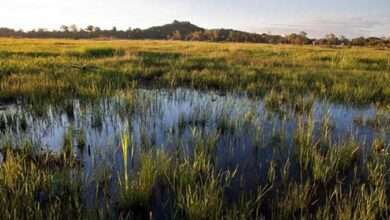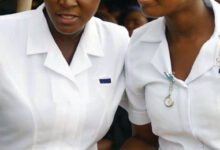
A gold rush in the Midlands’ Shurugwi district by both licensed mining companies and artisanal miners has spiked a health catastrophe in the region which has seen the HIV prevalence rising way above the national figure of 11% raising fears that new infections can rise countrywide.
Statistics show that Shurugwi district’s HIV prevalence is standing at 15.62% with the pandemic’s incidences rate at 0.40% which is significantly high. Nationwide, the rush for other minerals like lithium has also contributed significantly to the rise of sexually transmitted infections.
Shurugwi District Aids Coordinator from the National AIDS Council, Peter Muzarakuza said that the HIV situation was being driven by the gold miners who had disposable income, which they are using to lure young girls.
He said HIV hot spots include Surprise, which is a densely populated suburb as well as Makusha, Circle V, Wonderer, Chimona and places around Boterekwa Mountain where there is indiscriminate mining of gold by Chinese companies and illegal miners.
He said HIV hot spots include Surprise, which is a densely populated suburb as well as Makusha, Circle V, Wonderer, Chimona and places around Boterekwa Mountain where there is indiscriminate mining of gold by Chinese companies and illegal miners.
“Our challenge is that the gold miners are very mobile and come for the mineral from across the country. That is why we have a high rate.
Also important to note is that the situation then becomes like when you throw a stone in a single point of a water body and then it splashes to other areas. That is how the HIV will likely spread.”
Muzarakuza however insisted that NAC is doing all it can to contain the situation.
“What we are now doing is what we call combination prevention which involves various methods of stopping new infections that are spiking cases of HIV. We are also targeting apostolic churches whose young girls are also at risk.
Moreover, we are ramping up information dissemination programmes to ensure that the miners are taught on HIV prevention, treatment and care, just to manage the situation.”
Vungu district in the Midlands with a population of 121,000 people is also recording high HIV cases at 13.51 % prevalence of the pandemic – again due to existence of growing gold rush in the area.
Sukholuhle Sibanda, the Vungu District Aids Coordinator, confirmed the figures and said a pool of partners like the Joint Hands Welfare Organisation putting together resources to fund a programme called DREAMS which is earmarked at targeting young female adolescents in HIV awareness programmes.
“We are targeting young girls who are at risk as well as the older men mostly into mining activities who are the perpetrators.
Through the DREAM programme, we are speaking to young girls to dream beyond trinkets from miners and see a long-term future without HIV.”
“Mining areas are the hotspots but we introducing programmes and facilities to help reduce the new infections.”
Health authorities in December last year singled out a lithium project owned by a Chinese company in Goromonzi as spurring a health crisis after employing over 4,000 workers without establishing a static clinic at the plant which resulted in an upsurge of Sexually Transmitted Infections in the district.
Located 38 kilometers from capital Harare, Arcadia Lithium Project which sits on 14 kilometers of land in the mountainous Goromonzi area, is owned by Honayou Cobalt which bought out Australian investors Prospect Resources for US$422 million in May last year.
Soon after taking over the lithium mining operations, the company went on a massive recruitment drive of workers, among them mobile equipment operators, tipper truck drivers, drilling machine operators, steel fixers, filter machinists, water cart operators, milling machine operators and diesel plant operators.
However, the population of the company’s employees in the small district of Goromonzi has now resulted in the spike of diseases mostly STIs due to absence of a health centre that can provide robust services for prevention and treatment of the ailments.
Grayham Mafoke, the National Aids Council’s Goromonzi District Aids Coordinator (DAC) told The NewsHawks during a visit of the Arcadia Lithium Project last year that in the third quarter of 2022, STI cases shot up above all the other districts in the province.
Goromonzi district recorded 1,800 STI cases amid reports that scores of commercial sex workers from Harare and Chitungwiza had flocked to the area.
“The lithium project employees about 4,000 workers and 95% of them are male mostly from Harare who come to work leaving their families in Harare in what we call spousal separation which is driving rise of the ailments.
So without a static health centre around we have seen this increase of diseases that are transmitted sexually in communities where the mine workers are staying.”
Mafoke also revealed that there has since been an emergence of hot-spots in the district at mostly growth points like Juru, Mverechena, Mutangadura, among others. DAC Mafoke said:
“In the event that people here want services like treatment, they will have to travel to Harare mostly and so you will find out that most people find the distance too long and so if there is an STI that emerges, it circulates more within the community because of lack of treatment.”
NAC has deployed a peer mentor at the mining plant, Sandra Masamba who is helping with having the workers change their behavior and scale down cases of STIs.
“When the mine workers finish work and go into the communities, they are taking on STIs as some commercial sex workers are targeting them. We are also on the highway corridors and so the ladies come here a lot so there is need for increased health care services.”
Source| NewsHawks


























